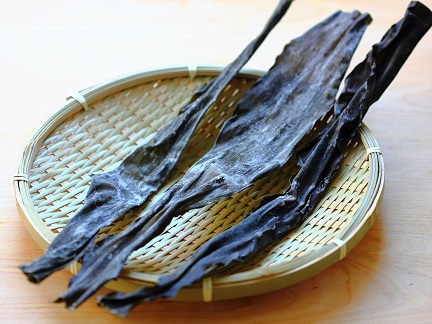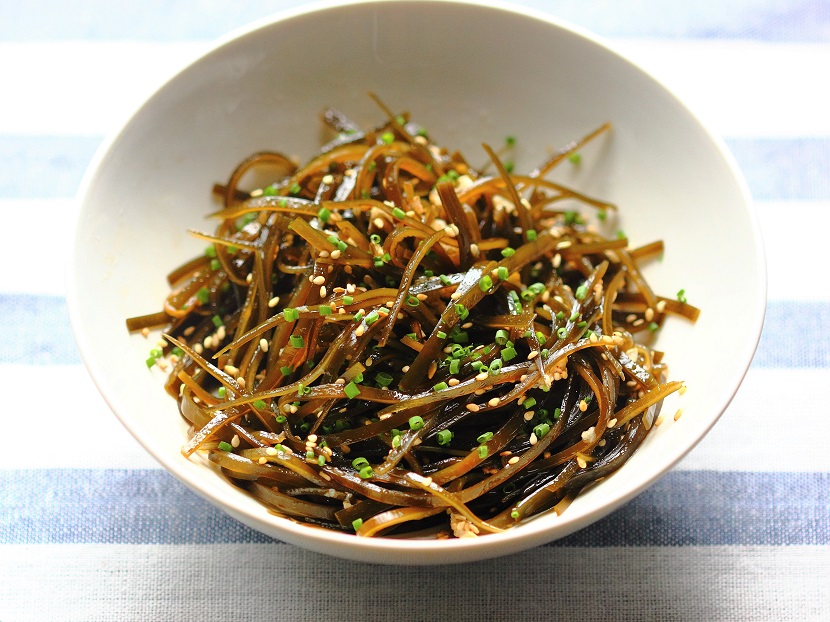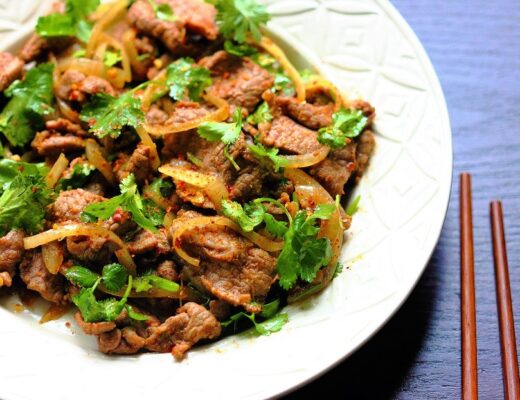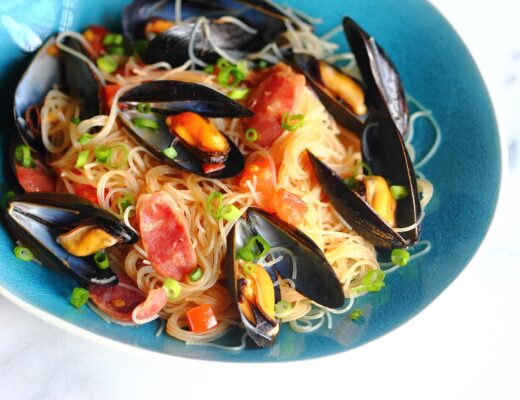Last Updated on September 4, 2020 by Simon Fan
“Kelp is the new kale.” If you read food magazines or food columns, you’ve probably noticed such prediction popping up in recent years.
While I’m not a big fan of treating food as a fashion item or chasing after the latest food trend, I do like the fact that kelp and edible seaweed at large have gained interest and recognition as delicious food with incredible nutritious benefits.
 Kelp, known as hai dai (海带, meaning “sea ribbon”) in China, or kombu (昆布, meaning “large cloth”) in Japan, has been widely eaten in East Asia long before it became “fashionable” in the West. Rich in umami flavor, mildly salty, and subtly sweet, kelp is great on its own or used as a flavor enhancer.
Kelp, known as hai dai (海带, meaning “sea ribbon”) in China, or kombu (昆布, meaning “large cloth”) in Japan, has been widely eaten in East Asia long before it became “fashionable” in the West. Rich in umami flavor, mildly salty, and subtly sweet, kelp is great on its own or used as a flavor enhancer.
You’ll generally find kelp in its dried form at Asian markets and health food stores. The dried kelp strips are often covered with a thin layer of white powder, which comes from the interior and is formed at the surface during the drying process. The powder is full of flavors and you wouldn’t want to wash it away. Simply wipe the kelp with a damp cloth before using.
My favorite way of cooking kelp is to add it to pork rib soup, creating an intensely meaty and comforting broth that’s perfect for a cold winter day.
In warm weather, a refreshing kelp salad would be a great option. Use my recipe below as a guide and flavor the kelp to your liking—there’re virtually endless possibilities.
A side bonus of making this salad? You also get a kelp stock packed with umami and great for vegetarian dishes.
Kelp salad with garlic oil and sesame seeds
Serves 2
Ingredients
1 oz (30 g) dried kelp
3 cups (720 ml) water
2 teaspoons soy sauce
2 teaspoons Zhenjiang (aka Chinkiang) vinegar
1 teaspoon sugar
3 garlic cloves, minced
2 tablespoons vegetable oil
1 tablespoon toasted white sesame seeds
Salt and freshly ground white pepper
1 teaspoon finely chopped scallion for garnish
Directions
- Use a pair of scissors to cut the kelp crosswise in half or into thirds for easier handling, and soak them in the water for 2 hours.
- Transfer the kelp and the soaking water to a saucepan, and bring to a gentle boil. Lower the heat and simmer until the kelp is cooked to your desired texture, 5 to 10 minutes. I like it soft with some crunch but not mushy.
- Remove the kelp from the cooking water and let it cool. Strain the cooking water (kelp stock) and reserve for another use. Slice each kelp piece crosswise (rolling it into a scroll would make slicing easier) into thin strips about ⅛-inch (3 mm) thick.
- In a bowl, mix the kelp with the soy sauce, vinegar, and sugar. Chill in the refrigerator for at least 30 minutes before serving.
- Right before serving, place the garlic in a heatproof bowl. Heat the oil in a small saucepan until tiny wisps of smoke start to rise, and pour the oil over the garlic. Stir the mixture, and add it as well as the sesame seeds to the kelp. Toss to mix well. Adjust the seasoning with salt and pepper as needed, and serve garnished with the scallion.



